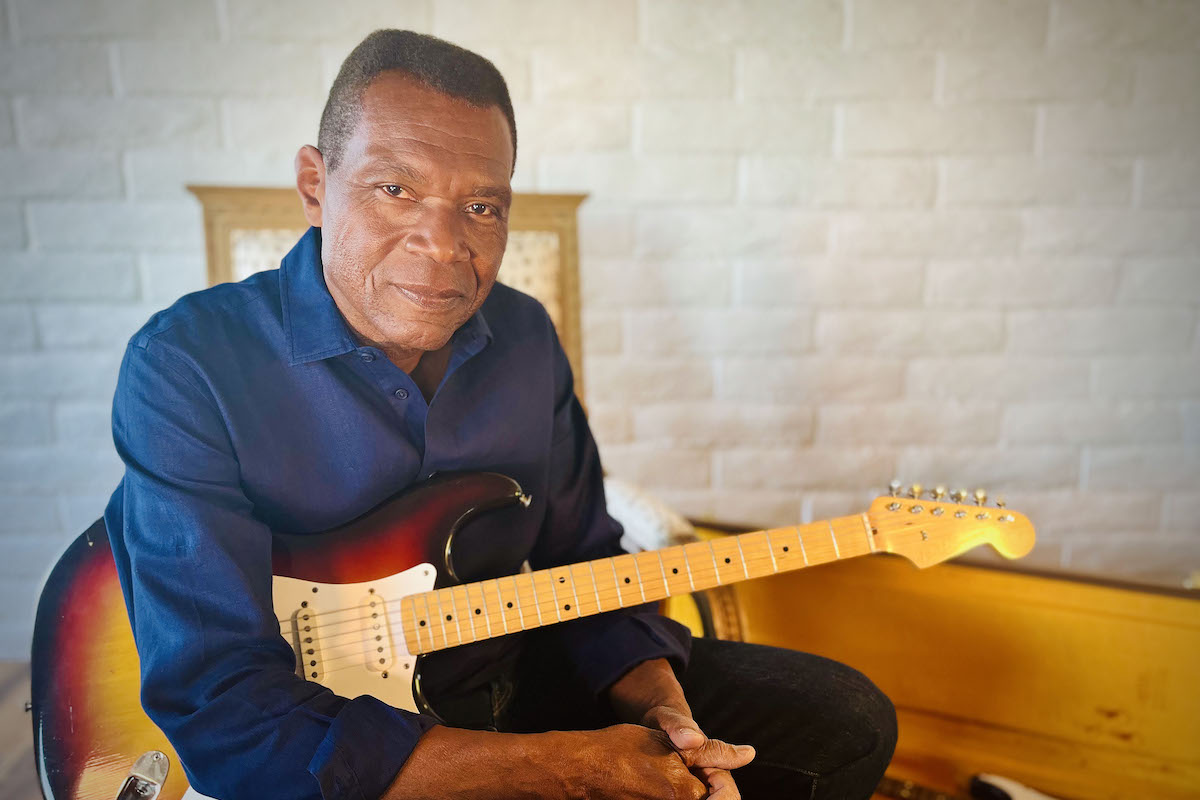That’s What He and We Heard, Robert Cray Returns to Santa Barbara’s Lobero
Veteran R&B/Bluesman and Santa Ynez Resident Robert Cray Is Back on Stage in Downtown Santa Barbara

In setting up an interview with prominent bluesman (and rhythm and bluesman) Robert Cray, we agreed to meet down by the railroad tracks at the station. Java Station, that is, a Hollister Avenue coffeehouse-of-choice for locals. Cray qualifies, having lived with his family in Santa Ynez for years. It’s a happy home base for Cray’s world-traveling ways as a five-time Grammy-winning artist with a deep story and discography going back to the ’80s. He shifted into a higher profile with his career-launching 1986 album Strong Persuader, with the signature hit “Smoking Gun.”
Cray, 69, makes one of his fairly regular hops over the 154 to play the Lobero Theatre on Saturday, July 29. At the moment, he is still in the long shadow of a dazzling album That’s What I Heard, celebrating a more old-school soul mode than usual for him. It also showcases Cray’s vocal powers, sometimes overshadowed by his legacy as a bold, supple guitarist.
As timing worked out, the 2020 album came out under the COVID cloud and didn’t receive the love, attention, and tour support it deserved. Then again, That’s What I Heard represents timeless music, making a personal nod to music mostly of the ’60s, in R&B and gospel (a prize in the mix is “Burying Ground,” by the Sensational Nightingales). Cray noted, “The title came after the selection of covers that we did, the whole overall view of the varieties of music. All that stuff is stuff that I listened to, coming up, basically, or was inspired by.”
Tracing his history, from a time in Munich, when his military father was stationed, to spending his formative adolescent years in Tacoma and Seattle, Cray said, “I was a big fan of the Beatles, and still am. In the latter days of high school, as 15- and 16-year-old kids, we got the blues bug. That just became the focus, and I shut out everything else. Then it wasn’t very long afterward, I opened the pages back up and listened to Otis Redding records and stuff like that again, and let everything else back in.
“But for a short while, we just absorbed all we could by listening to records by the blues people and seeing those people. I played guitar and was a big fan of people like Albert Collins and BB [King]. … Then, with the R&B stuff, that’s all we wanted to do, play R&B and blues.”
I distinctly recall hearing Cray on bills with such blues legends as Albert Collins on the Lobero stage, when he was just a young upstart from Seattle with a tasty and blues-informed guitar style — the protégé playing with much older living legends of the true blues.
As Cray said, “A lot of the younger kids now who are doing the blues and whatnot haven’t had the opportunity as we did to play with a lot of the old people, who are gone now. There were Albert Collins, Albert King, John Lee Hooker, now BB, and Muddy [Waters], and on and on. We were able to stand shoulder-to-shoulder and pick up how to back up and just see it [in action].”
Cray’s 40-plus-year career has wended through the ages and stages of the music business, up to the heavily digitized reality for working musicians. Sounding like a blues veteran of yore, Cray finished his java and noted that, in the current era, “Records are not paying the bills. You have to go out and work. Which is fine — that’s where I’m happiest anyway, onstage.”
Here he comes back to the Lobero again, and thankfully so.
See lobero.org.



